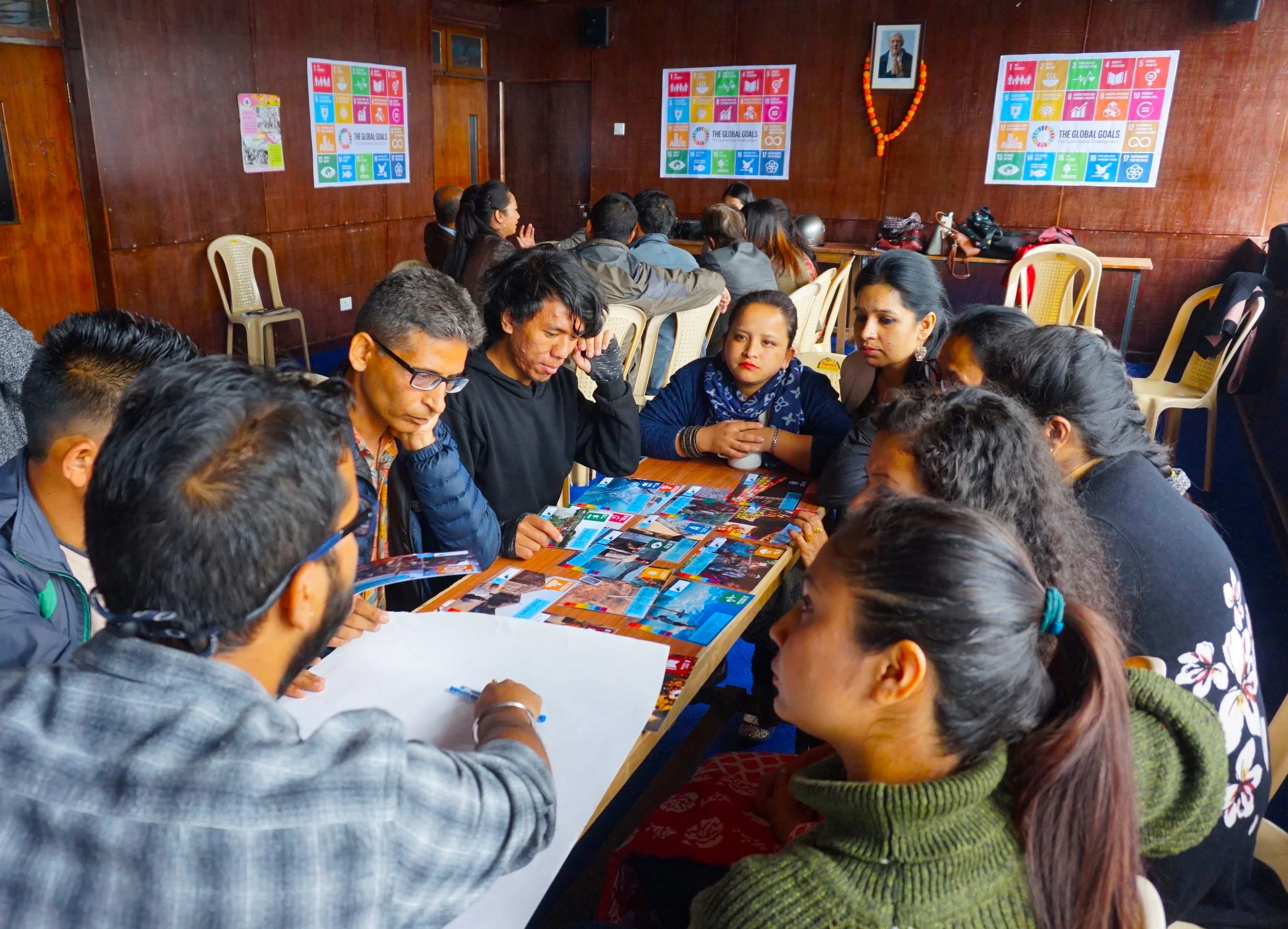Humanity reaching 8 billion – how to unleash virtuous cycles of regeneration in the interest of other species and ecosystems? Lessons from India
Koraput young farmers on how to unleash virtuous cycles of regeneration between human and other living systems
The United Nations estimated that the world’s population will reach 8 billion next week and India will replace China as the world’s most populous nation next year. As the international community gathers in Egypt for one more round of climate negotiations, this is that time of the year when reports, pledges and promises emerge to remind us of the troubled relationship between human lifestyles and the interests of other species and ecosystems.
Regenerative design theory argues that living systems are in a continuous state of transition, either evolving or devolving. As it assumes the mantle of the world’s most populous nation, what can India teach us about how to stimulate an evolving virtuous cycle between human and other living systems?
A virtuous cycle is a complex chain of events in which one desirable occurrence leads to another which further promotes the first occurrence and so on resulting in a continuous process of improvement in a system.
Luzia Costa Becker/ Merriam-Webster
Here I present three lessons that I have learned over the years working in the Indian subcontinent, that should be at the forefront of our efforts to promote virtuous circles of regeneration in the interest of humans, other species and ecosystems.
Lesson 1 – Healthy soil, healthy communities
The livelihood and wellbeing of many of the tribal communities of Koraput in the state of Orissa are based on a single principle: healthy soils = healthy society. The notion of combining traditional sustainable farming practices with permaculture, agroecological and climate-resilient agricultural approaches, is already a reality to farmers and the Federation of Tribal Women in the Koraput district of Kakariguma, who rely on productive soils as their economic base. Drought tolerant plants combined with mulching, fortified composting, vermiculture and vermi-composting, herbal pesticides and green manures improve the productivity of theirs soils and the nutritional value of their meals.
The local agricultural schools teach new generations the value of mixed cropping, nitrogen fixation, bio-fertiliser preparation and seed-bank development. Siddhartvillage at the heart of the ‘Grow your own Food’ movement challenges the so called ‘climate smart agriculture’ approach that encourages the use of modified seeds, chemical pesticides, and synthetic fertilisers, as well as promoting high-risk technologies such as synthetic biology, nano-technology and geo-engineering. This imposition of new biotechnology has been particularly damaging for farmers in Orissa, who have learned the hard lessons meted out by the cash crops paradigm. Lesson one from India: the need to reinforce the invisible and indivisible dynamics of soil and society.
Koshi Bienalle Resilient Bodies in an Era of Resistance by Prabhakar Pachpute
The need to reinforce the invisible and indivisible dynamics of soil and society
‘This year we anticipate the birth of the Earth’s eight billionth inhabitant. This is an occasion to celebrate our diversity, recognise our common humanity. At the same time, it is a reminder of our shared responsibility to care for our planet and a moment to reflect on where we still fall short of our commitments to one another.’
UN Secretary-General António Guterres
Lesson 2 – It takes a village to educate a child
Building people’s capacity to consistently advance place-based streams of virtuous activity, has been the ethos of Barefoot College – founded over 50 years ago in Tilonia, Rajasthan by the social activist and educator, Bunker Roy. The College’s mission has been to improve the lives of people in areas suffering from extreme rural poverty, by providing access to basic needs like safe drinking water, clean light, basic education, and dignified livelihoods. Barefoot believes in the Gandhian maxim that it takes a village to educate a child, and that all have the right to live a life of dignity and respect with timely community support and freedom from hunger and exploitation. Since 1997, Barefoot College’s influence has grown out of India to train nearly 3,000 Solar Mamas from 96 countries. Together they have provided solar electrification to 56,000 houses, fabricated 28,000 solar lanterns, and provided full solar electrification to 1,300 villages.
More than 66,000 individuals have trained and worked as Barefoot teachers, in diverse roles such as health workers, solar and water engineers, mechanics, designers, builders, carpenters, computer technicians and instructors, accountants, recycling professionals, business owners, and service workers. In all, over 100,000 students have graduated from the College, and its upskilling programmes have trained 2,200 artisans and weavers who are re-igniting of the supply and demand of local products that are handmade, slow-made’and well-made. Barefoot embodies the principles of transformative learning which the world most needs, while demonstrating low-carbon, place-based values and practices for communities to thrive.
Kochi Bienale Eye Spy installation 2019 - Curator Srila Chaterjee
Lesson 3 – Living in harmony with all life according to ageless scriptures
Hinduism is intrinsically an ecological religion. The symbiotic dance between humans and the multitude of earth’s life forms is embedded in the Vedic texts, which has helped guide many of its followers to live in harmony with nature for thousands of years.
Numerous passages of the Ramayana and Mahabharata and the Puranas recognise the sacred in nature in all its manifestations - the sun, the stars, the rivers, the trees, and the animals. It seems clear that the loss of understanding and appreciation of the interdependence of all life – or rather a deliberate ignorance of this – has resulted in the abuse and exploitation of the earth and its resources.
‘Do not harm the environment; do not harm the water and the flora; earth is my mother, I am her daughter/son; may the waters remain fresh, do not harm the waters. Tranquility be to the atmosphere, to the earth, to the waters, to the crops and vegetation…’
Vedic prayer that invokes divine intervention to bless and protect the environment
Global population projected to peak around 10.4 billion in the 2080s
World Population Prospects 2022 suggests that the world’s population could grow to around 8.5 billion by 2030 and 9.7 billion by 2050, and is projected to peak at around 10.4 billion people during the 2080s and to remain at that level until 2100. More than half of the projected increase in the global population up to 2050 will likely be concentrated in eight countries: the Democratic Republic of the Congo, Egypt, Ethiopia, India, Nigeria, Pakistan, the Philippines, and the United Republic of Tanzania. Indeed, countries in sub-Saharan Africa are expected to contribute more than half of the increase anticipated through 2050.
The relationship between population growth and sustainable development is complex and multidimensional. For Liu Zhenmin, the UN Under-Secretary-General for Economic and Social Affairs, ‘rapid population growth makes eradicating poverty, combatting hunger and malnutrition, and increasing the coverage of health and education systems more difficult’. That’s where the timeless lessons of India could inspire the rest of humanity. How to co-evolve with living systems not as an intellectual idea, but internalised as a way of being.
Darjeeling associations envisioning the future they want in alignments with the SDGs (by author)





